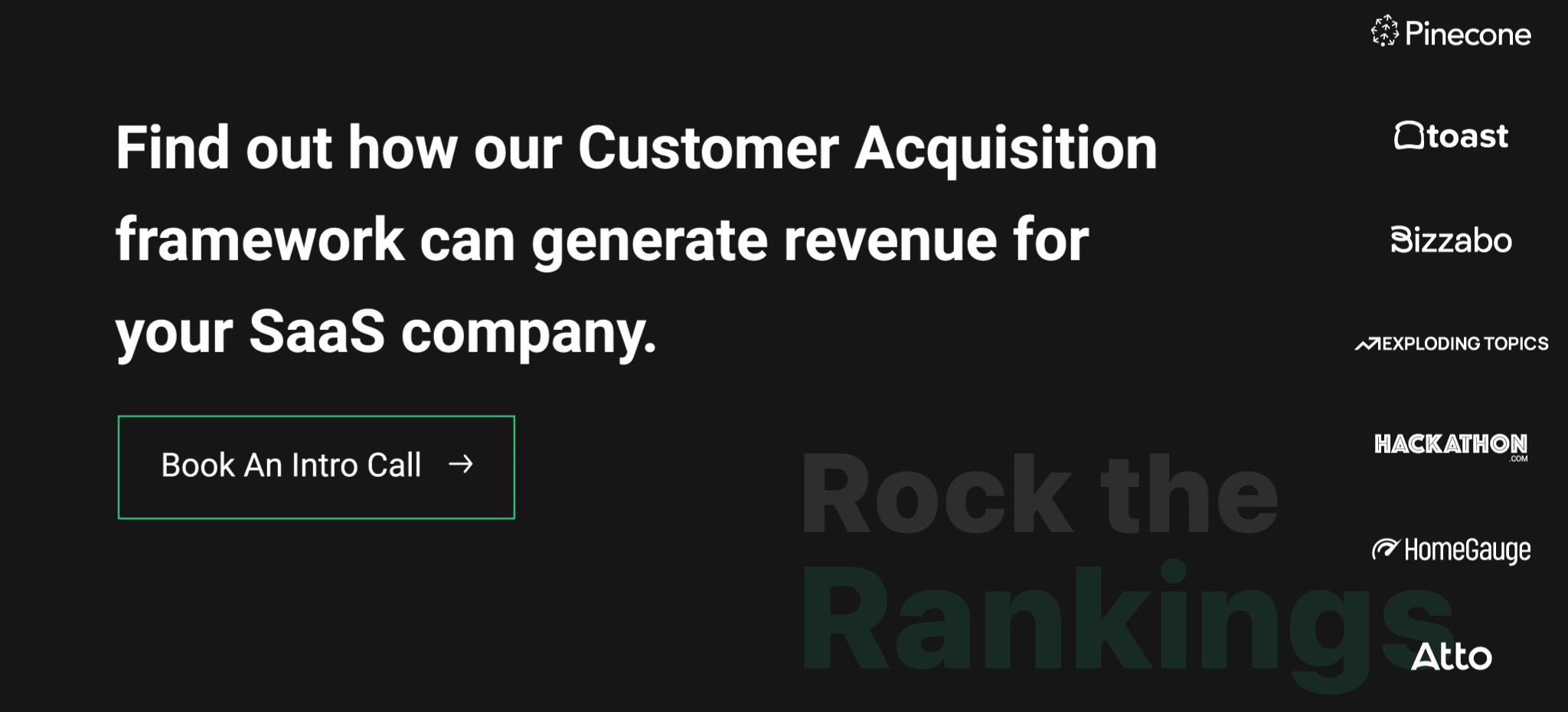Are you tracking and reporting what really matters, or vanity metrics?
During initial conversations with prospects, it’s common to hear past disappointments in the inability to track through metrics that actually matter – aka hard revenue numbers (output) vs. the work itself (input).
Impressions, clicks, and keyword positions can provide some value, but those should be leveraged for further insights for a campaign – not necessarily reported against.
Keyword position is a vanity metric BUT can act as a good leading indicator within the first weeks of an engagement.
From there, it’s straight into metrics that actually matter, i.e. qualified website visitor to conversion and conversion rate, and revenue generated from organic leads.
Before diving head first into any marketing initiative, you have to set some clear expectations internally on what’s to be the expected outcome.
Our SaaS SEO calculator should help set some light, and help to expectation set before getting started.
Starting an engagement off the back of hard numbers also can provide some realistic expectations for what’s achievable over a given time period, i.e. knowing your numbers when it comes to:
This can then be merged against traffic lift expectations, as well as the investment to make the decision a lot clearer – but, it’s our job after to ensure we’re actually impacting those numbers, and showing that in reporting – not vanity metrics such as clicks, impressions, and the likes.
Use the calculator below and input the required metrics, and you can start to forecast different scenarios against the:
For me, the formula is simple to impact the numbers that count:
When we know the answers to those questions, and that we can impact those two core areas – we can ensure we’re stacking on quality sign-ups and demos, and more importantly – revenue.
Determining a good ROI when it comes to SEO will be dependent on your industry, and domain rating (authority), among other factors.
When evaluating clients, we like to see our ROI estimations land somewhere between 400-500% (4x-5x ROI), to ensure confidence in our work adding to the bottom line.
One thing to consider that isn’t included in most ROI estimates is the return of SEO over its lifetime. SEO can provide returns for many years to come, and it’s not uncommon for SEO efforts to provide for 3-4+ years into the future.
If your organic strategy is driving right-fit visitors and demos / sign-ups well into the future, consider this as well -as it’s not included in the 12-month timeline most ROI calculators use.
We consider this a good thing, as to be conservative with our estimates and look short to mid-term with the added bonus of long-term performance.
Struggling to grow organic demos signups? Rock The Rankings is a top-ranked SaaS SEO Agency that helps SaaS businesses make organic their customer acquisition engine. We’ll create a free marketing plan for your business, and walk you through step-by-step exactly what needs to be done to grow faster.
SEO takes time – period.
Depending on your situation, it might be possible to hit some short-term home runs over a 3-6 month period – but for more competitive spaces you can expect 9-12+ months to see a return on your investment.
In terms of what you can expect from running a campaign, assuming you’re early-stage when it comes to SEO opportunities, the time horizon for investment, into revenue growth generally looks like the following:
There are a few core things you can focus on doing that we recommend to our clients in order to increase ROI from SEO:
The SEO strategy you implement is much more than simply just writing content. All of these areas come into play to ensure you’re driving right-fit traffic, as well as demos and sign-ups.
If you’d like to have a more in-depth ROI analysis for your SEO efforts, or are interested in taking your SEO strategy to the next level – we’d be more than glad to put together a marketing plan for you with the exact strategies that will help you to get there.

Founder of Rock The Rankings, an SEO partner that helps B2B SaaS brands crush their organic growth goals. An avid fan of tennis, and growing micro-SaaS businesses on the weekend. 2x SaaS Co-Founder – Currently working to build and scale Simple Testimonial.
Book a 1-on-1 intro call with our founder that includes a FREE custom marketing plan. Start growing faster, today.